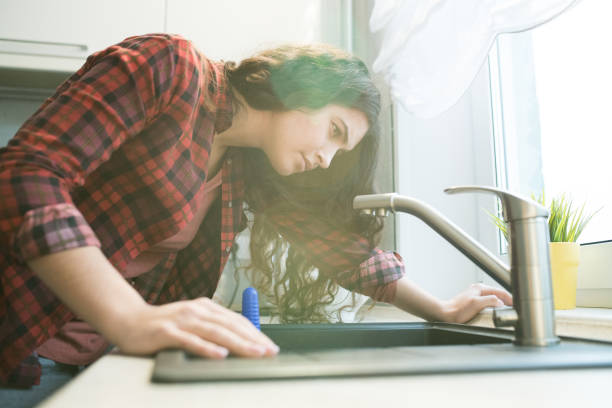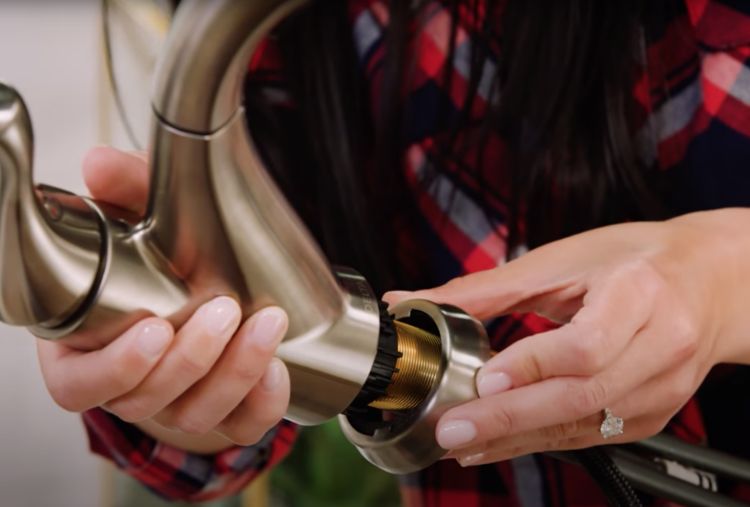When It's Crucial to Deal with a Leaking Faucet
When It's Crucial to Deal with a Leaking Faucet
Blog Article
Listed here in the next paragraphs you can get more great content relating to Why Are My Faucets Dripping (And Can I Fix It Myself)?.

Trickling taps might look like a small inconvenience, yet their influence goes beyond just the nuisance of the audio. From drainage to sustaining unnecessary economic prices and health risks, overlooking a trickling tap can lead to various effects. In this write-up, we'll look into why it's crucial to resolve this usual house concern without delay and properly.
Waste of Water
Environmental Impact
Dripping taps contribute considerably to water wastefulness. According to the Epa (EPA), a single tap dripping at one drip per secondly can squander greater than 3,000 gallons of water annually. This not just stress water sources however additionally impacts ecosystems and wild animals based on them.
Step-by-Step Overview to Repairing a Dripping Tap
Devices Required
Prior to trying to repair a trickling tap, gather the needed devices, consisting of an adjustable wrench, screwdrivers, replacement parts (such as washing machines or cartridges), and plumber's tape.
Usual Tap Issues and Their Solutions
Recognize the kind of tap and the certain issue causing the drip. Typical problems consist of worn-out washers, corroded valve seats, or damaged O-rings. Describe producer directions or online tutorials for detailed assistance on repairs.
Financial Expenses
Raised Water Expenses
Past the environmental effect, trickling faucets can pump up water costs considerably. The accumulated waste with time converts into higher utility expenses, which could have been prevented with prompt fixings.
Possible Residential Property Damages
Additionally, long term trickling can bring about harm to components and surface areas surrounding the faucet. Water accumulation can cause staining, deterioration, and also architectural problems if left ignored, resulting in additional fixing expenses.
Health and wellness Problems
Mold And Mildew and Mildew Development
The continuous presence of dampness from a leaking tap produces a perfect setting for mold and mildew and mold growth. These fungis not just compromise interior air high quality yet likewise present wellness dangers, especially for people with respiratory system problems or allergies.
Waterborne Diseases
Stagnant water in trickling taps can become a breeding place for bacteria and other microorganisms, raising the risk of waterborne illness. Pollutants such as Legionella microorganisms thrive in stagnant water, potentially resulting in severe ailments when consumed or breathed in.
Do it yourself vs. Specialist Fixing
Advantages and disadvantages of DIY Repair Work
While some may attempt to take care of a leaking faucet themselves, DIY fixings feature their own set of obstacles. Without correct understanding and tools, do it yourself efforts can exacerbate the concern or lead to incomplete repairs, lengthening the problem.
Benefits of Working With a Professional Plumber
Employing a specialist plumber ensures that the underlying source of the dripping faucet is attended to properly. Plumbings possess the know-how and tools to identify and repair faucet issues efficiently, saving time and minimizing the threat of more damages.
Ecological Duty
Specific Payment to Conservation
Taking responsibility for fixing trickling taps straightens with wider efforts towards water preservation and environmental sustainability. Every person's activities collectively make a substantial impact on maintaining precious sources.
Sustainable Living Practices
By focusing on timely repairs and embracing water-saving habits, people add to sustainable living techniques that benefit both present and future generations.
Safety nets
Routine Upkeep Tips
To avoid trickling faucets, execute routine upkeep such as cleaning up aerators, inspecting for leaks, and changing worn-out components without delay. Furthermore, consider installing water-saving devices or upgrading to extra efficient fixtures.
Value of Prompt Services
Dealing with leaking taps as quickly as they're discovered stops more water wastefulness and possible damages, ultimately saving both water and money in the long run.
Impact on Residential Or Commercial Property Value
Perception of Well-Maintained Home
Preserving a property in good condition, consisting of resolving upkeep problems like dripping faucets, enhances its regarded worth and value among possible purchasers or renters.
Influence on Resale Worth
Properties with properly maintained plumbing fixtures, consisting of taps, command higher resale worths in the real estate market. Resolving leaking taps can add to a positive impact during property examinations and negotiations.
Final thought
Addressing a leaking faucet goes beyond plain benefit; it's a necessary action towards saving water, reducing monetary costs, and protecting health and wellness and residential or commercial property. Whether with do it yourself repair work or professional assistance, taking action to fix dripping taps is a small yet impactful means to advertise accountable stewardship of resources and add to a healthier, more lasting future.
How to Fix a Leaky Faucet: Step-by-Step Repair Guide
A leaky faucet may seem like a simple annoyance, but if it's not fixed promptly, that leak could cost hundreds to potentially thousands. From water damage to mold, mildew, and high water bills, even a tiny leak can be catastrophic if left unattended. Damage like this can even affect the overall value of your home, so it's important to take the right approach for leaky faucet repair. You may need the help of a plumber in some cases, but we've got a few tips you can try on how to fix a leaky faucet before calling the pros.
Four Faucet Types
When you're learning how to fix a leaky faucet, the first step is knowing what kind of faucet you're working with! There are four common types.
Cartridge Faucets
Cartridge faucets come in one- or two-handled varieties. In one-handled cartridge faucets, hot and cold water combines in a single cartridge. In the two-handled versions, hot and cold water are controlled separately and mixed in the faucet.
Ball Faucets
Ball faucets have a single lever you push up and down to adjust the pressure and rotate to change the temperature. A slotted metal ball controls the amount of water allowed into the spout.
Compression Washer Faucets
They're the oldest type of faucet, but they're still used in many homes — especially older ones. Compression faucets have two separate handles that, when turned, raise or lower the washer that seals a water valve. This valve stops water from flowing through the faucet when it is turned off.
Disc Faucets
Disc faucets rarely need to be repaired due to their maintenance-free design. The water flow is controlled by two discs — the upper one raises and lowers against a fixed lower disc, creating a watertight seal. If your disc faucet starts leaking, you may need to replace the seals or clean residue buildup from the inlets.
Fixing a Leaky Faucet
Step 1: Turn Off the Water
Whether you're learning how to fix a leaky bathtub faucet or how to fix a leaky kitchen faucet, always turn off the water supply to your working area when you're fixing a leak. The last thing you want is a flood added to your list of things to fix.
Look for the shutoff valves below your sink or around the tub and turn them clockwise to stop the water flow. If your faucet doesn't have shutoff valves, you may need to turn off the water for the whole house. Check to make sure it's off by turning the faucet on. If nothing comes out, you're ready to start the repair.
Step 2: Take Apart the Faucet
How you disassemble your faucet depends on the type of fixture you have. You can use a flathead screwdriver to remove the caps on top of the handle or handles for cartridge and compression faucets. Inside, you should see handle screws. Unscrew these with a screwdriver to remove the handle.
Disc- and ball-style faucets will typically have an inlet screw near the handle, and removing that will reveal the interior of the faucet.
Detach the Valve Stem
For cartridge- and compression-style faucets, you'll see the inner valve stem or cartridge once you remove the faucet handles. If you have a compression faucet, unscrew the brass valve stem. If you have a cartridge faucet, pull out the cartridge. If your cartridge has been in place for a while, it may require some tools or extra force to remove it due to mineral deposits.
Examine and Replace Parts
Once you've removed the parts, check them out to confirm what needs to be replaced. You may see corroded rubber washers, O-rings, stems, or cartridges. On a ball-style faucet, check the seats and springs for damage.
If you need to repair a leaky disc faucet, check the inlet and seals on the lower disc.
Once you determine what parts must be replaced, visit your local hardware store. Bring the damaged parts with you to ensure you can purchase the correct components to replace them.
Clean Valves and Faucet Cavity
If you've removed a stem or cartridge, you may notice mineral buildup in the faucet's threads. Use white vinegar to clean the valve seat by soaking it for a few minutes, then scrub it away with a soft toothbrush and rinse with warm water. You can also clean the interior of the faucet in the same way.
Reassemble the Faucet
Once your faucet is cleaned and the required parts have been replaced, it's time to reassemble it. Put the pieces back together and slowly turn the water supply back on. Doing this slowly is crucial because too much initial water pressure can damage the new hardware you've just installed.
https://homewarranty.firstam.com/blog/how-to-fix-leaky-faucet

As an avid person who reads about , I was thinking sharing that article post was really helpful. Those who appreciated our page please don't forget to pass it around. Bless you for your time. Come back soon.
Report this page